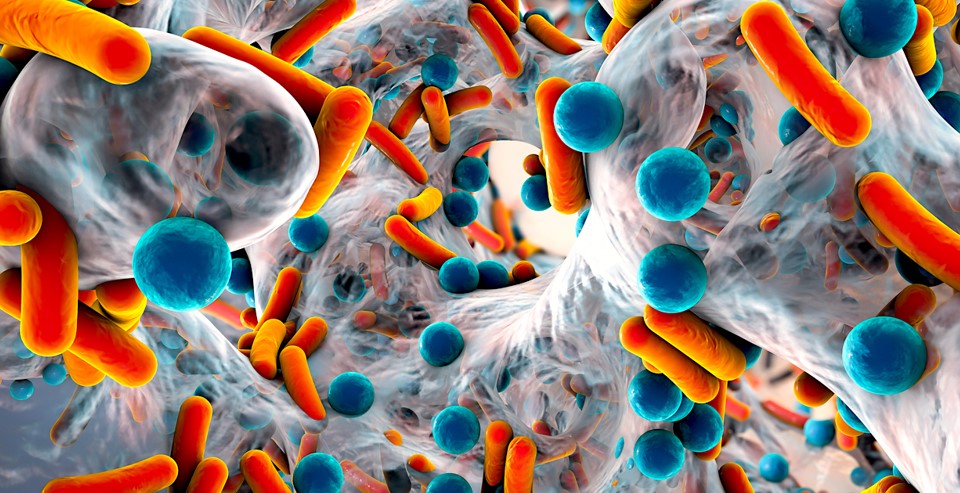
MRSA, short for methicillin-resistant Staphylococcus aureus, is an antibiotic-resistant type of bacteria. MRSA infections are very dangerous due to their resistance to most antibiotic treatments, as it can spread through direct contact with another person or an object that has been exposed to the infection.
A MRSA infection can be transmitted by skin-to-skin contact with someone who is carrying the bacteria, as well as via bites, cuts, medical devices such as ventilators, and indirect contact with objects that have been contaminated by MRSA.
If left untreated, or not fully treated, MRSA can cause very serious health complications. It is important for individuals to practice good hygiene and avoid close physical contact with people exhibiting MRSA symptoms. Especially for those who are already a patient receiving care at a hospital, surgery center, nursing home, or other place of care. HAIs (healthcare-acquired infections) like MRSA are massive and only growing in prevalence throughout healthcare facilities worldwide.
How to protect yourself from MRSA infection
MRSA infections can be highly dangerous if left untreated. To best protect against a MRSA infection, it is important to practice good hygiene with frequent hand washing and bathing as well as sanitizing any surfaces that may come into contact with the skin. If you are using a shared space such as a gym or locker room, consider wearing protective clothing that can be laundered frequently such as gloves and flip flops, especially if you have any recent cuts, scrapes, or minor wounds.
In the event of a MRSA infection, visiting a healthcare provider immediately can help you effectively treat the infection before it has a chance to progress further and become far more serious or life-threatening. With the right knowledge on MRSA infection prevention and using the best treatments, you can put yourself in the best position to stay healthy and MRSA free, especially when in places of care like hospitals.
Common symptoms of a MRSA infection
MRSA is a type of bacteria that has become resistant to a lot of antibiotics. MRSA infections can take on many forms and have many associated symptoms.
A MRSA infection will usually cause redness, sores, and/or lumps on the skin that are painful and warm to the touch. There may also be a pus discharge from these sites of infection too.
MRSA can also cause fever, chills, extreme tiredness or exhaustion, muscle aches, sweating or rash, confusion, or cognitive impairment in serious cases. Anyone with any possible MRSA infection symptoms should seek medical care immediately. You never know how serious it is or how it can be in such a short period of time.
The Best Treatments for MRSA Infections
Being an infectious bacterial strain that is commonly resistant to antibiotics, MRSA has become increasingly hard to treat in recent years. MRSA typically affects the skin, but can spread to the bloodstream or deeper tissue, making it especially dangerous. This can lead to blood infections, sepsis, and death pretty quickly.
Treatment for a MRSA infection may involve one or more rounds of antibiotics, though stronger forms of MRSA have become immune to many common antibiotic treatments. MRSA infections may also require surgical cleaning and follow-up IV medications for treatment. With appropriate medical guidance and care, MRSA infection can be managed successfully in most cases.
One such treatment that needs to be highly considered in healthcare is Vitastem Ultra, a new & innovative topical antibiotic spray that is being regarded as one of the world’s strongest topical antibiotics and 10x more effective at treating and healing MRSA infections than all other products it’s been tested against over the past decade or so.
The Path to Preventing MRSA infections in Healthcare
We know MRSA infections cannot always be treated with the usual antibiotics and have become increasingly difficult to contain. Fortunately, there are steps people can take to prevent MRSA infection.
Good hygiene practices such as hand washing with soap and water, using a disinfectant on shared surfaces, and avoiding close contact with other people who have MRSA should all be part of an MRSA prevention plan in the US and abroad.
Covering open wounds and sores with clean bandages before interacting with other people is also important. Additionally, speaking to your health care provider about the most up-to-date preventative measures available is highly recommended to ensure you are doing everything you can to protect yourself from MRSA infection.
Moving to adopt and accelerate more widespread daily use of new and innovative antibiotics like Vitastem Ultra in pre, post-op, and outpatient surgery settings, hospitals, nursing homes, and other healthcare facilities that are common grounds for HAIs & SSIs should take note. A topical antibiotic spray like Vitastem Ultra can work quickly to drastically reduce, if not drastically reduce MRSA & staph infections from these healthcare facilities, literally out of the box.
If you or a loved one is suffering from a MRSA infection and your current regimen of treatments isn’t showing the results you’ve been hoping for, then ask your doctor today about Vitastem Ultra. It could prove to not only be a great treatment but may just save your life from far more serious, life-threatening complications that may be the result of a MRSA infection, which at the end of the day, could be totally preventable with Vitastem.
